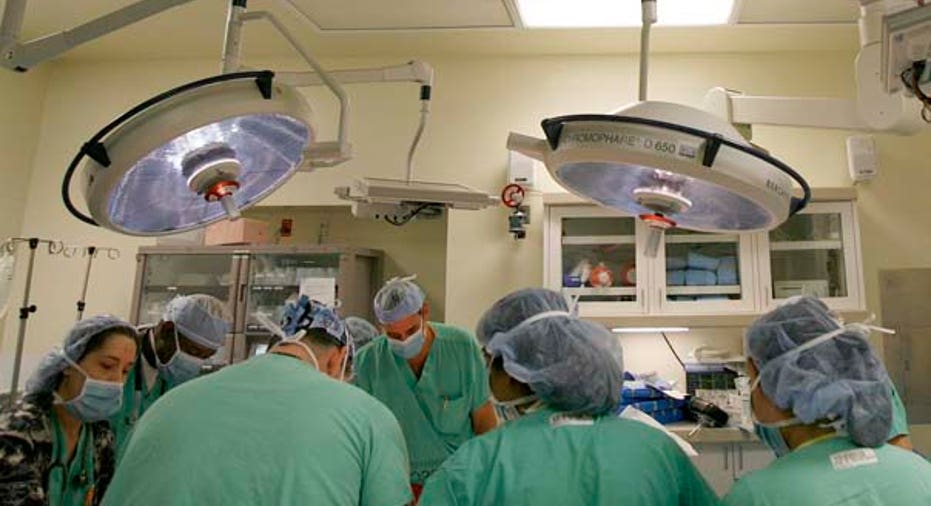U.S. Hospital Workers Outspend Others on Medical Care

Hospital employees spend 10% more on healthcare, consume more medical services, and are generally sicker than the rest of the U.S. workforce, according to a study released on Monday.
The cost difference was even greater when dependents were taken into account, with healthcare costs 13% higher, including medical care and prescription drugs.
The study, conducted by Thomson Reuters Healthcare, analyzed the health risk and utilization of 1.1 million hospital workers and compared them with 17.8 million health plan members across all industries around the country.
Researchers did not look at the causes for the disparity.
Healthcare workers and their dependents were more likely to be diagnosed and hospitalized to treat asthma, diabetes, congestive heart failure, HIV, hypertension and mental illness.
It found that the average cost of healthcare for hospital employees and their dependents was $4,662 per year -- $538 higher than that of the general population.
MORE VISITS TO THE ER
Hospital employees and their dependents saw their doctors less often, but were 22% more likely to visit an emergency room and spent 18% more time hospitalized, the study found.
Kreg Sherbine, co-author of the study, speculated that easy access to expensive care may play a role.
"When they're right down the hall from the emergency room, it might just be easier to go there than to make an appointment with a physician," Sherbine said.
The stressful environment of a hospital and the irregular hours that many hospital employees work, which together make it difficult to maintain a healthy lifestyle, may be another contributing factor, he said.
Sherbine said he doubted the reason was more exposure to disease in the workplace since there was disparity in numerous noncommunicable diseases, such as diabetes and obesity.
"Awareness could be a factor. We know that chronic conditions are often undiagnosed. One might reasonably conclude that professionals are more aware of their symptoms and consequently more likely to seek treatment. However, that doesn't explain the inordinate difference in utilization," he said.
Researchers concluded that a hospital or health system with 16,000 employees would save an estimated $1.5 million annually in medical and pharmacy costs for each 1% reduction in health risk.
"There are industries with higher risks. The manufacturing sector, for example, is typically older and has an even less healthy population," Sherbine noted.
But with increasing financial pressure on hospitals, hospital administrators need to pay attention to their bottom lines, he said.
"Salaries and benefits are their biggest costs. We think it's really important for hospitals to address this," he said.



















